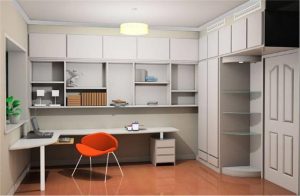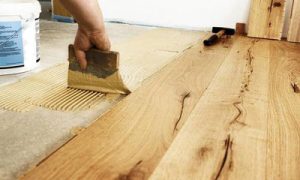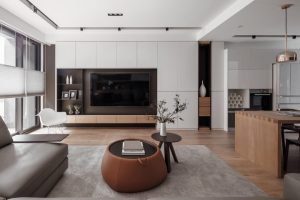- What is wood-based panel? Why develop wood-based panel industry?
Wood-based panels are made of wood panels or other plant fibers, which are processed and separated into various unit materials through a special process, and then pressed with or without adhesives under certain conditions.
Reason:
1) Improve wood properties: The use of wood is limited by anisotropy, natural defects and diameter classes;
2) Improve the utilization rate, save resources, reduce the requirements for wood materials, make full use of processing residues etc;
3) Expanding the use and added value of wood, small-diameter wood and low-grade wood are modified and reorganized into various wood-based panels such as laminated plywood and particle plywood to replace wood.
- Briefly describe the production method of wood-based panels
The production methods of wood-based panels are divided into three categories according to the moisture content of the constituent units when the slab is formed: dry method; wet method; semi-dry method. According to whether the slab is heated or not heated when pressing the finished product, it is divided into cold pressing method and hot pressing method.
- What is plywood?
Plywood is composed of three or more layers of veneers according to the principle of symmetry, and the adjacent layers are usually symmetrically arranged in the middle phase and the direction of the grain is perpendicular to each other.
- The technological process of producing plywood by dry heat method.
Logs – cutting – peeling – veneer rotary cutting – shearing – veneer drying – splicing – repairing – gluing and assembling – hot pressing – trimming – sanding – inspection and grading
- What kinds of plywood are classified according to use, number of layers, and water resistance of the adhesive layer?
By use: ordinary plywood (non-special purpose plywood, most output, most widely used, most typical structure), specialty plywood (with special properties, such as flame retardant, anti-corrosion, anti-insect plywood, etc)
By layers: three-layer plywood, five-layer plywood, multi-layer plywood
According to water resistance: Type I plywood (weather resistant plywood, used in outdoor conditions, can pass the boiling test), Type II plywood (water resistant plywood, used in humid conditions, can pass the hot water immersion test of 63 ± 3 C), III Plywood-like (non-moisture resistant plywood, for use in dry conditions, can pass the dry test)
- What are the production methods of plywood?
Wet heat method (obsolete): The peeled veneer is glued and hot pressed without drying, which is prone to bubbling, delamination, and warping. Urea-formaldehyde glue cannot be used.
Dry-cooling method: The veneer is glued after drying and pressurized at room temperature, such as latex.
Dry heat method: After the veneer is dried, apply glue and hot press, and use some thermosetting glue.
- The requirements for plywood production wood raw material?
Requirements for log quality: there should be no defects that have a serious impact on the plywood output rate and veneer quality; Log length: According to the national standard, the length of the log gauge for plywood is 4m, 5m, 6m, and the length tolerance is +6, – 2cm; log diameter grade: the minimum diameter of plywood is 26cm, and the gauge diameter is graded by 2cm; Wood properties of logs: tree species with high density, high hardness or serious warping and deformation after drying, avoid using them.
- Briefly describe the impact of wood structure on plywood production.
(1) Annual rings:
Ring-porous wood: such as ash, the early wood is loose and has large tube holes, while the late wood is dense, and the veneer obtained has a large pattern, but it is easy to penetrate the glue during hot pressing.
Diffuse-porous wood: The interweaving density of the wood is uniform and dense, the veneer is homogeneous and smooth, and the thin veneer can be spun.
(2) Heart and sapwood: The heart and sapwood are distinct tree species, and there are differences in moisture content, wood hardness, shrinkage and expansion, which affect the processes of heat treatment, rotary cutting, drying and hot pressing.
(3) Wood rays: can increase the appearance of the veneer, but affect the bonding strength.
(4) Hardness: too hard wood damages the rotary knife greatly, and it is easy to crack during processing: too soft wood is easy to fluff, and the board surface is not smooth.
(5) Sharpness: The veneer that is rotated out has a beautiful texture, but it affects the strength.
(6) Resin channel: There are many resins. When rotary cutting and drying, the resin will contaminate the rotary knife and the dryer, and it is easy to produce degumming and bubbling during hot pressing.
- Briefly describe the conditions that the adhesive should have in the production of wood-based panels.
(1) The adhesive should have sufficient fluidity to wet the solid surface well. Only with good wettability can a firm bond be formed, which is the primary condition.
(2) The characteristics of various adhesives are different when they are used, and they should have different performances according to the requirements of use. The use performance mainly includes viscosity, concentration, active period, curing conditions, curing speed and so on.
(3) After the adhesive is cured, it can form a firm adhesive layer with chemical stability and the product has sufficient durability.
(4) When the volume of the glued joint formed by the adhesive shrinks, the internal strain generated is small, and it should have the ability to gradually disappear.



